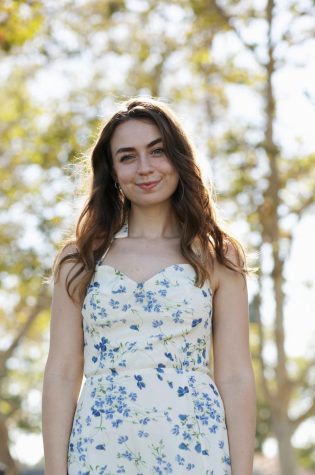Since the university closed in March, art students have been attending Zoom classes like the rest of the student body. Senior Caylie Smith created a project to unite art students through the Make-A-Thing challenge. Using the oh-so-reliable U.S. Postal Service, Instagram and collaboration, she has begun a digital and tactile competition.
A CREATIVE COMPETITION
The competition started with art students, alumni and faculty members signing up to help with or participate in the challenge. From there, “box sponsors” will fill boxes with materials—anything from paint and studio materials to objects. They will also create a set of rules for each box that its creator will have to follow. The sponsors will send their box to the first student or alumni on their list, and each person will make their project, snap a picture and replenish the box’s materials. Then, they send it to the next person on the list included in the box. There are about seven boxes total, and each competitor will only get their hands on one box. At the end of the box’s rotation, the sponsor will get to compete as well.

This is where the project implements technology: the photos taken of each finished work will then be uploaded to the Make-A-Thing Instagram account. The photo that garners the most likes will win the competition. At this point, it is estimated that there will be about five faculty-provided prizes in total for the top 5 winners of the project.
DIGITAL DIALOGUE
The inspiration for this project lies partly in a two-semester upper-division course, which is led by associate professor of art Astri Swensdrud.
“I started working with Caylie spring semester developing some of the themes and ways of working that are a part of her creative practice,” Swensdrud said. “There was this idea of creating artworks that had interactive components to them, kind of inviting other people to become participants in her own work, but she wasn’t really sure what that was going to look like yet.”
The combination of isolation brought on by the coronavirus pandemic and its effects on her senior thesis project brought Smith to this idea. Swensdrud encouraged seniors via a Zoom lecture to take a leadership role in the department and help students continue to connect with each other. A few weeks later, Smith presented the project to her class and faculty. The project has included nearly everyone from the department.
Smith, who has a double concentration in graphic design and painting, found that the intersection between the material and digital components of art has been central to her studies.
“The history of graphic design all started with print,” Smith said. “Originally, graphic design was tangible. It’s kind of a recent phenomenon that it moved into this digital platform. That intersection between digital and analog material is very much related to the intersection between graphic design and painting.”
This connection shows almost directly in her senior project. Mixing the two worlds and mediums has allowed her to create something that is interactive and focused on building community. Additionally, this challenge makes up for the lack of collaboration and feedback peers give each other in the studio. Junior art major Julia Phillips noted how Instagram comments might feed into this:
“I’m interested to see how the comments on Instagram will end up because I think that’s where a lot of reaction is going to happen… definitely [will be] encouraging and uplifting people.”
HOW TO ENGAGE
The goal of this project is that it will be ongoing and interactive for students from all majors and departments through its Instagram platform. Students will be posting and uploading their creations all semester, and readers can vote for the projects they deem worthy by simply liking the photo. Other than that, encouragement via comments is, of course, recommended.












